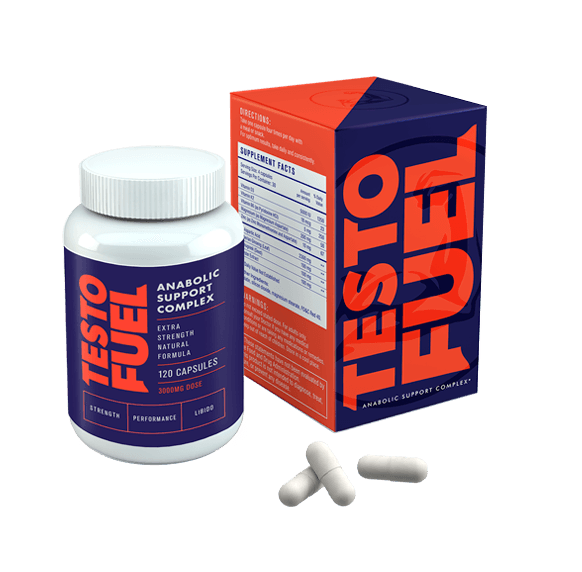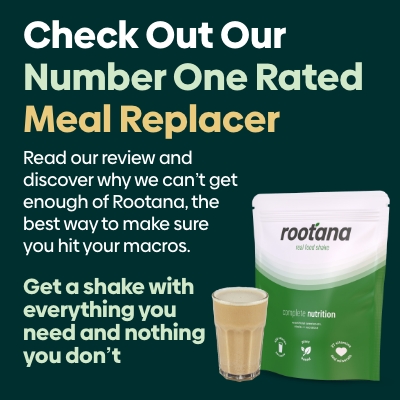12 Week Fat Loss Exercise Program
In as little as 3 months you’ll look slimmer, fitter and leaner with this comprehensive, results-guaranteed fat loss exercise program
This guide is a complete walk-through of everything you need to know to drop body fat, build muscle and ramp up fitness.
It’s guaranteed to get you in shape, transform your physique and take you to levels you never thought achievable.
IOur 12-week program is your lean muscle cheat sheet, specifically designed to take you from your current starting point to an enhanced, confident version of you.
The goal is simple…
Throw everything you’ve got into just 3 months of grit and hard work and come out the other side with a completely transformed body and mind.
Let’s get going.
What does this program cover?
| Goal: | Fat loss |
| Aimed at: | Beginners and intermediate |
| Program duration: | 12 weeks |
| Workout duration: | 45-60 minutes |
| Equipment needed: | Barbell, dumbbell, body weight, cardio equipment |
Laying Down Strong Foundations for Fat Loss
You might have read hundreds of exercise programs for fat loss, bought endless books or even racked up hours and hours of podcasts on the subject.
But yet you didn’t achieve your goals.
The problem with many of these products is that they attack fat loss from just one angle.
Either exercise or nutrition.
In this guide we want to give you every single tool to change the way you look. So we held a covert meeting between our personal trainers, sports nutritionists and lifestyle expert staff to collaborate on the most comprehensive, detailed fat loss bible available.
And this is what we came up with.
Get your mindset right and boost your chances of fat loss success
Before you even start to hit the gym or change your eating habits you have to get the psychology right.
A bit like a sculptor shapes their wire armature before they start to build their art piece with clay, setting up your lifestyle provides a base for everything else.
Get some paper and a pen or open up a notes function on your mobile and make a list about everything you think is important over the next 12 weeks:
- What are your specific goals? – try to be realistic and honest.
- What barriers have you got? – detail which triggers, influences or hurdles might get in your way and stop you succeeding.
- How can you work around your barriers? – analyzing strategies to overcome any barriers is key to keeping your momentum going.
By planning in advance, you can shift your mindset to a more positive and preemptive place.
Writing down your goals can be hugely motivating.
It’s like signing a little ‘success contract’ with yourself. And once you do that, you’re much more likely to work harder towards.
Being open and honest about potential barriers such as lack of time, poor adherence, bad diet or lack of interest will help you explore ways around them. These are what we’d refer to as coping mechanisms.
For example, if you’re an emotional eater you can plan in advance how to avoid the triggers that cause overeating. If you are short on time you can organize your diary so as to squeeze workouts into your schedule, or when to prepare your healthy meals in advance.
Start off on a positive note by planning your goals and challenges and you’re sure to achieve successful fat loss.
It’s completely normal to lose motivation or come across obstacles over a 12-week fat loss journey. But it’s how you deal with these that makes or breaks a great physique.
Fat Loss Dieting: The Key to Success
Once you’ve planned your lifestyle and goals, and you’ve nailed your mindset it’s time to zone in on your diet.
The first, and most important point about the way you eat is this: you will not shred body fat unless you hit a calorie deficit.
This simply means that you burn off more energy than what goes into your body each day.
You didn’t lose fat because you weren’t in a calorie deficit
If you’ve ever tried a fat loss program in the past and been unsuccessful, it wasn’t because you weren’t trying hard enough – it was because you weren’t triggering your fat cells to release their fatty goodness to be used as energy.
The problem was you were eating too much.
Losing fat is a game of calories in versus calories out.
If you expend more energy through exercise, basic metabolic functions and general activity than you do from taking in energy from food you will lose fat.
You’re essentially sending a signal to your fat cells, telling them that because you are lower on energy, you need stored calories to make up the difference.
It’s very much a scenario similar to Oliver Twist, giving it a “please sir, I want some more?” to your fat cell membranes.
And if you ask nicely, it’ll release some more of it’s high density energy for you to use in place of those missing calories.
It’s that simple.
How big should an energy deficit be?
Calorie deficits aren’t about a ‘less is more’ approach.
It’s not sustainable to starve yourself, and research shows that you’re setting yourself up to fail.
For successful fat loss you have to eat enough to sustain basic functions and allow you to undertake day-to-day activities. But still below what’s called your maintenance level – the number of calories you need to maintain body weight and composition.
If you’re unsure exactly how many calories you need for maintenance you can use our calorie calculator at the bottom of this article.
The most successful deficits work at around 20-25% below maintenance.
This gives you a nice starting point where fat will decrease but you’re still feeling fairly high in energy.
Just remember though to keep updating your calorie requirements – you’ll need to adjust your daily calories as your body weight changes.
Keep protein high to accelerate your results
Once you’ve calculated your overall energy intake it’s time to prioritize your macronutrient intake.
‘Macros’ as they’re called up and down the gym floors of the world are the nutrients in food that provide calories.
- Protein and carbs gives you 4 calories per gram
- Fat gives you a higher energy yield at 9 calories per gram
The first thing to do is to work out your total protein requirements.
This is because protein is paramount when on a fat loss diet, for the following reasons [1]:
- It is the most satiating nutrient so helps you control hunger and overall energy intake
- As the nutrient needed for growth and repair, protein maintains lean muscle so helps to keep your metabolic rate ticking over
- It has a thermogenic effect which can indirectly boost fat loss
You should aim for around 1 gram of protein for every pound of body weight. For example, a 170 lb person will need 170 g of protein.
Where you get it from is up to you – meat, fish, eggs, soy, mycoprotein or whey. It’s down to your preference.
Once you’ve worked out your total grams you can multiply it by 4 to tell you how many calories you are getting from protein.
As an example:
- Our 170 pound person needs 170 grams of protein per day for optimal fat loss progress.
- That works out at 680 calories (170 x 4).
- Let’s say that their overall daily calorie requirement is 1,800.
- That leaves 1,120 calories that can be obtained from carbs and fats.
And how much carbs and fats you choose to use as a ratio is up to you.
Go with whatever feels best for you – if you enjoy more carbs and less fat then go with that. Or shoot for the other way around if you like – as long as you don’t go over your calorie threshold it doesn’t really matter.
The only additional advice we’d give is to never skip on one macronutrient altogether. As soon as you start to go ‘no carb’ or ‘zero fat’ you decrease your chances of successful fat loss dieting considerably.
Key Points:
- In order to drop body fat you’ll need to be in an energy deficit.
- Aiming for a moderate deficit of 20-25% gives a good starting point. You can then adjust accordingly.
- Shooting for 1 gram of protein per pound of body weight will help you maintain muscle mass during a weight cut.
- Make up your remaining calories from carbs and fats
The 12 Week Fat Loss Exercise Program That Guarantees Results
At this stage you should have ticked off the following things…
- Your mindset is positive, you’re looking forward to the fat loss challenge and you have interventions in place to work around any barriers.
- Calorie intake is set, protein has been calculated and carbs and fats will make up your remaining energy requirements.
Now we can start to look at the third stage of your body transformation… exercise programming for fat loss.
And in this program you’ll be using one very specific tools to ramp up fitness levels, decrease body fat and boost lean muscle.
- High-intensity resistance training (HIRT) – strength circuits that focus on building muscle while shredding excess fat.
How does strength training help with fat loss?
Strength circuits are the holy grail of fat loss exercise programming.
When you diet and don’t lift weights, you lose muscle mass.
And as a metabolically active tissue that elevates your metabolism, if you lose muscle you find it harder to burn fat.
Combining your calorie deficit and protein intake with strength training is a surefire way of carving out a lean and strong physique.
Here’s why HIRT training provides the golden chalice of fat loss during this intense exercise program:
- High-intensity strength training burns huge amounts of calories and fat – ramp up daily energy expenditure with grueling workouts using free weights and body weight.
- You can enhance specific areas of your body – unfortunately you can’t really choose where you lose fat; but you can choose where you add muscle and shape.
Using HIRT to burn more calories
High-intensity resistance training is a challenging, circuit-based workout using strength training equipment.
If weight training and cardio decided to make a baby, this would be it!
HIRT maximizes fat burning by splitting your workouts into distinct phases – one where you work as hard as you can with various strength-based movements. And another where you recover.
You then repeat as many times as you need to… or are able to.
This allows you to blast your training load through the roof, while getting a great cardio response at the same time.
Using compound exercises gives you more bang for your buck:
There’s no room here for triceps kickbacks or calf raises. HIRT uses big lifts that work multiple muscles to really scorch fat.
In this fat loss program you’ll be zoning in on between 5 and 8 exercises per mini-circuit. Just enough to help you progress without leaving you gasping on the floor in a near-death-like pile.
Maximize the cardio effect with strategic ordering:
Switching between large muscle groups is always a good idea.
It allows optimal productivity, and let’s one muscle recover while you target another.
In high-intensity resistance training you structure your exercises to force blood to travel as fast and as far around your body as possible. This means that most workouts follow an upper-body, lower-body format or even push-pull for maximum results.
Find a rep range and timeframe that boosts results:
Most HIRT workouts are split into mini-circuits lasting 5-15 minutes long. This is plenty of time to do what you need to do without accumulating too much fatigue and risk getting injured.
You can add as many mini-circuits as you want, but 2-3 is considered to be a nice balance between training load, results and training too hard.
The idea is to complete as many exercises as you can back-to-back with minimal rest until the timer goes off. At that point you record how well you’ve done and then try to beat it next workout.
For each exercise you should choose a weight that challenges you to complete between 6 and 15 resp. This triggers some great muscle growth, but also provides a stimulus for cardio and fat loss too.
HIRT Training in a nutshell:
- Uses multi-muscle, strength-based exercises to burn fat and build muscle.
- Follows an upper-body, lower-body or push-pull format to enhance cardio effect.
- Generally split into mini-circuits that are 10-minutes in duration.
- Choose a weight for every exercise that is challenging for 6-15 reps.
The Program
Phase 1: Weeks 1-5
In phase 1 you have 3 separate mini-circuits to get through with each workout. These are all 10 minutes in length.
We want you performing these on 3 separate days of the week.
Remember, try not to rest until the 10 minutes is up, and when it is, rest no longer than 3 minutes before moving onto your next mini-circuit.
Mini-circuit 1
| Number | Exercise | Reps |
|---|---|---|
| A1 | DB Renegade row with push-up | 8-15 |
| A2 | DB Goblet squat | 8-15 |
| A3 | DB Clean | 8-15 |
| A4 | DB Romanian deadlift | 8-15 |
| A5 | DB military press | 8-15 |
Mini-circuit 2
| Number | Exercise | Reps |
|---|---|---|
| A1 | DB bench press | 8-15 |
| A2 | Kettlebell swing | 8-15 |
| A3 | Mountain climbers | 8-15 |
| A4 | DB walking lunges | 8-15 |
| A5 | DB bent over row | 8-15 |
Mini-circuit 3
| Number | Exercise | Reps |
|---|---|---|
| A1 | Kettlebell snatch / clean and press | 6-10 |
| A2 | Jump squats | 6-10 |
| A3 | Hindu push-ups | 6-10 |
| A4 | Medicine ball slams | 6-10 |
| A5 | Inch worms | 6-10 |
The Program
Phase 2: Weeks 6-12
In phase 2 you have two separate mini-circuits to get through in each workout. They are both 15 minutes in length.
This means the total workout time is the same as phase 1… but the mini-circuits are longer and there’s less rest.
Again, we want you performing all 3 of these back-to-back on 3 separate days of the week.
One additional thing you’ll notice is that the rep range is lower than in phase 1. This gives you free reign to lift much heavier weights and take your progress to the next levels.
Mini-circuit 1
| Number | Exercise | Reps |
|---|---|---|
| A1 | BB bench press | 6-10 |
| A2 | BB deadlift | 6-10 |
| A3 | Kettlebell alternate overhead press | 6-10 |
| A4 | Kettlebell swings | 6-10 |
| A5 | Weighted ab curls | 6-10 |
Mini-circuit 2
| Number | Exercise | Reps |
|---|---|---|
| A1 | BB Military press | 6-10 |
| A2 | BB Bent over row | 6-10 |
| A3 | Kettlebell alternate overhead press | 6-10 |
| A4 | BB Suitcase deadlift | 6-10 |
| A5 | BB Clean | 6-10 |



